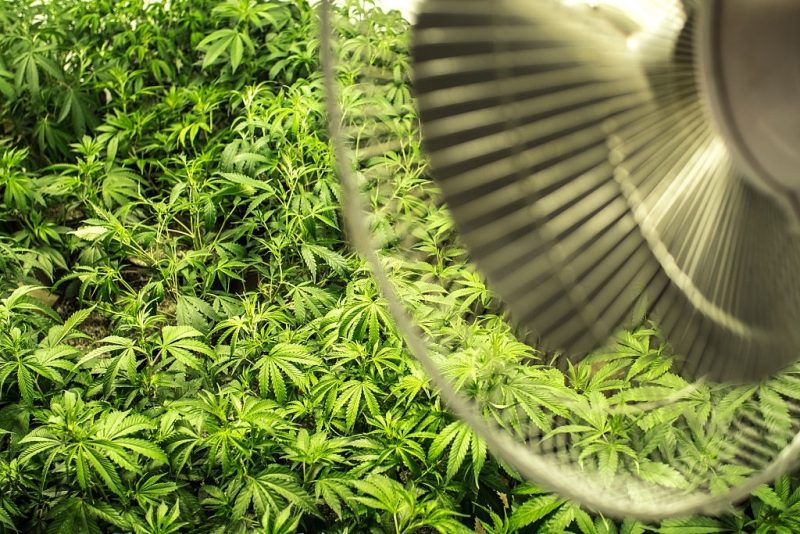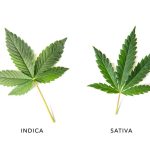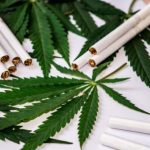🔥 Website for Sale - Contact Us
The biggest threat to indoor cannabis cultivators is the growth of mildew or mold caused by high humidity levels.
After a ton of research and multiple failed experiments, I found the ideal setup to how to control humidity in grow tent which I will share in this article.
Cannabis plans can be looked at as nature’s version of a humidifier because of how similar they interact in their environment.
Humidifiers and plants are comparable in that both converts water into moisture which gets released into the atmosphere.
Cannabis roots such up water like a vacuum which get distributed throughout the plant’s internal vascular system only to be released once again into the air.
The vascular system circulates the absorbed water throughout the plant until finally reaching tiny wholes called stomata found on the epidermis of leaves and stem.
Stomata are microscopic openings on the leaves that regulate the flow of water vapor and other gases like carbon dioxide and oxygen which are needed for photosynthesis and plant heat management.
The cannabis plant cooling system can release more than 90% of the absorbed water in the form of vapor which is typically not a concern for outdoor growers.
In this article, we are looking at why humidity is the “Achilles heel” for indoor cannabis cultivators and how to control humidity in grow tents.
What Is The Ideal Humidity Range?
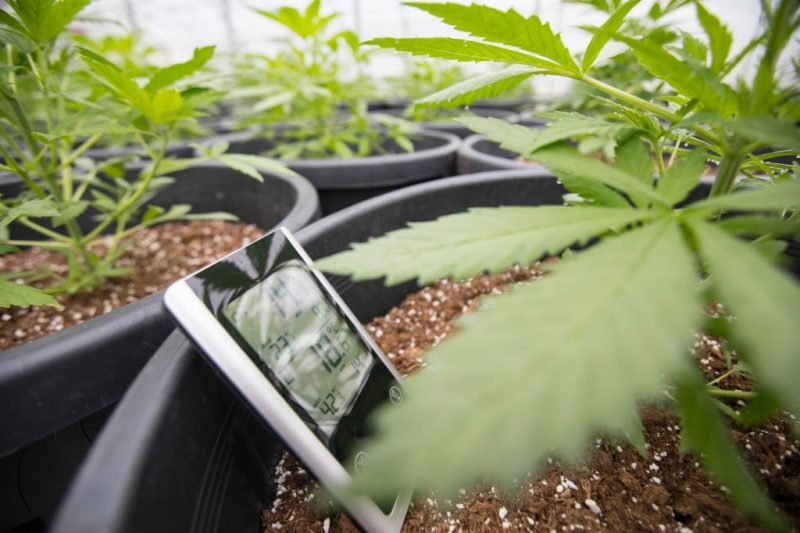
Recreating the optimal climate environment for each of the 4 growth stages of the cannabis life cycle is directly related to the quality and size of the flower harvest.
Each of these growth phases requires a specific balance of temperature and humidity for healthy plant development.
Germination Phase
During seed germination the optimal humidity range from 80% to 90% which is easily obtainable in a mini greenhouse.

Germinating seeds need high humidity levels so they can focus all their plant energy on growing a healthy root system for the next phase of their life.
Optimal temperature range for daytime 25-26ºC, and 21-22ºC at night.
Seedling Phase
Seedling and plant clones are extremely fragile because they have not yet developed a strong root system from which they can absorb water. Making plants in the seedling stage entirely dependant on their leaves to absorb moisture from the atmosphere.
The optimal humidity range for seedling and clones are between 65% to 70%.
Optimal temperature range for daytime 18-21ºC, and 15-18ºC at night.
During the seedling stage, the infant plant has not yet developed a sufficient roots system and needs to absorb all its moisture through its tiny leaves.
If you are using clones instead of seeds, I recommend using a plant gemination humidity dome because it helps to increase and contain temperature and moisture for consistency.
Vegetation Phase
Once the seedling spring roots the plant is ready to move to the next phase of its life cycle.
During the vegetation stage, the plant still enjoys high levels of humidity but with about 30% less.
Start to slowly lower the humidity over the course of a week to approximately 60% which minimizes stress to the plant and entices the cannabis to use its roots to do all the heavy lifting.
By keeping the humidity steady in the mid 60% range over the vegetation period the grower can make the plant use its roots system to absorb most of the needed water instead of the leaves.
This process allows the plant to optimize its internal cooling using the leaves as water outlets instead of an inlet.
As a result, cannabis plants can comfortably thrive in hot humid climates using this internal cooling system.
Early Flowering Phase
In order for the cannabis plant to start transitioning to its final rapid growth phase also known as “stretching”, the temperature and humidity need to be within a favorable range.
Even though cannabis plants always rely to some degree on their leave to absorb moisture and nutrients, the plants prefer to use their root system given the choice.
As a result, the temperature and humidity are lowered because by now the plant has developed a robust root system to support the lion’s share of their water needs.
In the early flower stage, the ideal humidity level is between 50% to 60% with an optimal temperature range of about 20-26ºC both day and night.
Lowering the humidity is necessary during this phase of the plant’s life cycle to prevent dangerous fungus growth like mold or mildew from forming.
Getting an optimal climate balance inside the to grow tents is extremely important because once mold or mildew creeps in the entire crop can be destroyed.
Just remember that mold and mildew infect the plant from the inside of the bud making it impossible to identify and remove the bad apples from the bunch.
Late Flowering Phase
The final phase of the plant’s life cycle can last for 6 to 12 weeks depending on how fast the strain matures.
Like the early flowing, this phase requires a vigilant eye to monitor and maintain the ideal temperature and humidity to prevent fungus growth.
During this stage, it’s ideal to lower the humidity to 30-40% range and temperature between 21-26ºC degrees celsius.
Adjusting the tent climate not only prevents plant diseases from forming but also increases flower smoking flavor and promotes bigger yields.
4 Methods: How to control humidity in grow tent
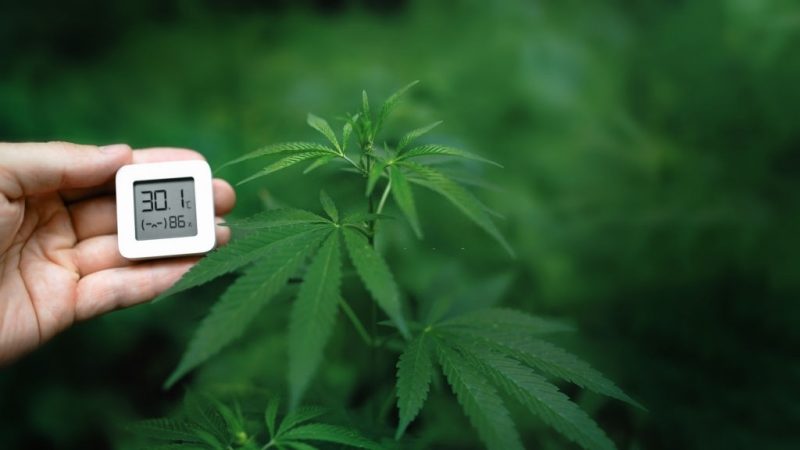
Comfortables humidity in an indoor growth space is essential, but like most things in life, too much of a good thing can cause damage.
Firstly, high humidity can cause the formation of poisonous fungi like mildew and other molds which is pretty much game over.
Secondly, excessive humidity affects the plant’s nutrient uptake transpiration effectiveness.
Both reasons are major causes for concern for indoor cannabis growers as they can be a huge predictor of the quality and size of the flower harvest, and in some cases are responsible for destroying the entire crop.
Here are 4 effective ways to reduce humidity in a grow tent using a combination of effective cultivation techniques and equipment.
1. Avoid Overwatering
The easiest and most effective way to lower humidity in a small grow space is the measure the amount of water used to hydrate the plants.
Overwatering the plants combined with high temperature will most certainly affect the humidity levels, essentially creating a never-ending battle to maintain a desired humidity level in the tent.
That being said, the watering method used can also contribute to the higher humidity levels inside the grow tent.
Old schools indoor marijuana cultivators prefer to water plants from the tray instead of directly on top of the soil.
Oversaturated soil turns soggy and will release the overflow water in the propagation trays that can also contribute to high humidity levels.
2. Trim your Busch :). Plant Density
One of the most useful features of plants is that during photosynthesis they absorb carbon dioxide and release oxygen. However, during the nighttime, the plant reverts and acts much like humans absorbing oxygen and releasing carbon dioxide.
The release of carbon dioxide can also contribute to raising the temperature in the grow space which in return lifts up humidity.
Leafy or bushy plants are generally the biggest carbon dioxide producers which makes it a good idea to consider defoliating your plants.
High plant density prevents proper airflow in the grow tent blocking some areas from receiving fresh air and carbon dioxide.
The best possible solution is either trimming unused leaves and branches when needed or removing some plants from the grow room to reduce plant density.
3. Proper Ventilation
A relatively inexpensive way to effectively control humidity in your grow space is to raise the number of exhaust outlets or to speed up the ventilation fan.
Proper circulating airflow is the most practical method to help control high humidity levels inside your tent.
It is also a good idea to use an atmospheric controller with a humidity sensor to automatically activate its exhaust fan to attain the perfect humidity balance.
In some cases obtaining an optimal humidity level can be as simple as opening a window or venting duct to balance humidity levels, but the most effective method is using exhaust fans.
This ventilation fan method is extremely effective because it sucks out water-saturated air that results in lower humidity levels since positive pressure inside the tent generates gentle air circulation.
4. Use grow tent dehumidifier
A dehumidifier is an essential tool to help control humidity in your grow tent.
However, a regular residential dehumidifier may not be entirely up to the task because they are typically much weaker than grow room dedicated models.
On the other hand, you neither want such a powerful dehumidifier that does the job too well and dry out the plants.
Cannabis plants release almost all of the moisture absorbed back into the air. As a result, the humidity levels correspond directly with the subtotal amount of water the plants consume.
Knowing the exact amount of water that goes into the tent crops allows you to easily estimate the dehumidifier size and speed at which it operates.
With this simple formula, you are able to quickly calculate the dehumidifier size for any given indoor grow space.
[number of plants] x [gallons of water per day] x 8 = [recommended dehumidifier strength]
Commercial dehumidifiers sold on the market measure their air displacement strength in the pints which is impractical when working with large space volumes.
To account for this, the formula is multiplied by 8 to convert pint to gallons to make the calculation easier.
Another factor to consider before purchasing a dehumidifier is the actual grow space size.
A small dehumidifier will most likely be too weak to remove the maximum pints of water from a large grow space.
All quality dehumidifiers indicate the area coverage on their sales pages and packaging which can be used to compare to other makes and models before making a purchase.

